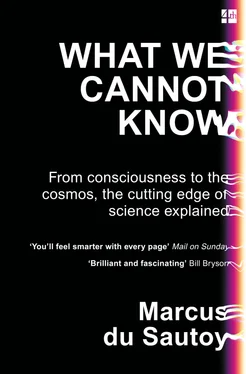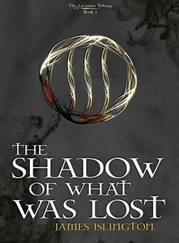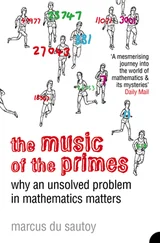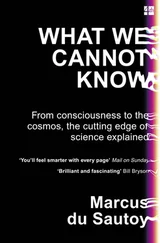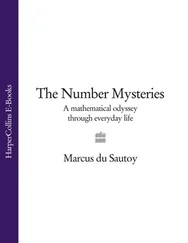Suppose, for example, that I start with a population of giraffes that have short necks. The environment of the giraffes changes such that there is more food in the trees, so that any giraffe born with a longer neck is going to have a better chance of survival. Let’s suppose that I throw my Vegas dice to determine the chance of a mutation for each giraffe born in the next generation following this environmental change. A roll of a 1, 2, 3, 4 or 5 condemns the giraffe to a neck of the same size or shorter, while a throw of a 6 corresponds to a chance mutation which causes a longer neck. The lucky longer-necked giraffes get the food and the shorter-necked giraffes don’t survive to reproduce. So it is just the longer-necked giraffes that get the chance to pass on their DNA.
In the next generation the same thing happens. Roll a 1, 2, 3, 4 or 5 on the dice and the giraffe doesn’t grow any taller than its parents. But another 6 grows the giraffe a bit more. The taller giraffes survive again. The environment favours the giraffes that have thrown a 6. Each generation ends up a bit taller than the last generation until there comes a point where it is no longer an advantage to grow any further.
It’s the combination of chance and natural selection that results in us seeing more giraffes with ancestors that all threw 6s. In retrospect it looks like amazing chance that you see so many 6s in a row. But the point is that you don’t see any of the other rolls of the dice because they don’t survive. What looks like a rigged game is just the result of the combination of chance and natural selection. There is no design or fixing at work. The run of consecutive 6s isn’t a lucky streak but is actually the only thing we would expect to see from such a model.
It’s a beautifully simple model, but, given the complexity of the changes in the environment and the range of mutations that can occur, this simple model can produce extraordinary complexity, which is borne out by the sheer variety of species that exist on Earth. One of the reasons I never really fell in love with biology is that there seemed to be no way to explain why we got cats and zebras out of this evolutionary model and not some other strange selection of animals. It all seemed so arbitrary. So random. But is that really fair?
There is an interesting debate going on in evolutionary biology about how much chance there is in the outcomes we are seeing. If we rewound the story of life on Earth to some point in the past and threw the dice again, would we see very similar animals appearing or could we get something completely different? It is the question that May raised at the end of our lunch.
It does appear that some parts of evolution seem inevitable. It is striking that throughout evolutionary history the eye evolved independently 50 to 100 times. This is strong evidence for the fact that the different rolls of the dice that have occurred across different species seem to have produced species with eyes regardless of what is going on around them. Lots of other examples illustrate how some features, if they are advantageous, seem to rise to the top of the evolutionary swamp. This is illustrated every time you see the same feature appearing more than once in different parts of the animal kingdom. Echolocation, for example, is used by dolphins and bats, but they evolved this trait independently at very different points on the evolutionary tree.
But it isn’t clear how far these outcomes are guaranteed by the model. If there is life on another planet, will it look anything like the life that has evolved here on Earth? This is one of the big open questions in evolutionary biology. As difficult as it may be to answer, I don’t believe it qualifies as something we can never know. It may remain something we will never know, but there is nothing by its nature that makes it unanswerable.
Are there other great unsolved questions of evolutionary biology that might be contenders for things we can never know? For example, why, 542 million years ago, at the beginning of the Cambrian period, was there an explosion of diversity of life on Earth? Before this moment life consisted of single cells that collected into colonies. But over the next 25 million years, a relatively short period on the scale of evolution, there is a rapid diversification of multicellular life that ends up resembling the diversity that we see today. An explanation for this exceptionally fast pace of evolution is still missing. This is in part due to lack of data from that period. Can we ever recover that data, or could this always remain a mystery?
Chaos theory is usually a limiting factor in what we can know about the future. But it can also imply limits on what we can know about the past. We see the results, but deducing the cause means running the equations backwards. Without complete data the same principle applies backwards as forwards. We might find ourselves at two very divergent starting points which can explain very similar outcomes. But we’ll never know which of those origins was ours.
One of the big mysteries in evolutionary biology is how life got going in the first place. The game of life may favour runs of 6s on the roll of the evolutionary dice, but how did the game itself evolve? Estimates have been made for the chances of everything lining up to produce molecules that replicate themselves. In some models of the origins of life it is equivalent to nature having to throw 36 dice and get them all to land on 6. For some this is proof of needing a designer to rig the game. But this is to misunderstand the huge timescale that we are working on.
Miracles do happen … given enough time. Indeed, it would be more striking if we didn’t get these strange anomalies happening. The point is that the anamolies often stick out. They get noticed, while the less exciting rolls of the dice get ignored.
The lottery is a perfect test bed for the occurrence of miracles in a random process. On 6 September 2009 the following six numbers were the winning numbers in the Bulgarian state lottery:
4, 15, 23, 24, 35, 42
Four days later the same six numbers came up again. Incredible, you might think. The government in Bulgaria certainly thought so and ordered an immediate investigation into the possibility of corruption. But what the Bulgarian government failed to take into account is that each week, across the planet, different lotteries are being run. They have been running for decades. If you do the mathematics, it would be more surprising not to see such a seemingly anomalous result.
The same principle applies to the conditions for producing self-replicating molecules in the primeval soup that made up the Earth before life emerged. Mix together plenty of hydrogen, water, carbon dioxide and some other organic gases and subject them to lightning strikes and electromagnetic radiation and already experiments in the lab show the emergence of organic material found only in living things. No one has managed to spontaneously generate anything as extraordinary as DNA in the lab. The chances of that are very small.
But that’s the point, because given the billion billion or so possible planets available in the universe on which to try out this experiment, together with the billion or so years to let the experiment run, it would be more striking if that outside chance of creating something like DNA didn’t happen. Keep rolling 36 dice on a billion billion different planets for a billion years and you’d probably get one roll with all 36 dice showing 6. Once you have a self-replicating molecule it has the means to propagate itself, so you only need to get lucky once to kick off evolution.
Our problem as humans, when it comes to appreciating the chance of a miracle such as life occurring, is that we have not evolved minds able to navigate very large numbers. Probability is therefore something we have little intuition for.
Читать дальше
